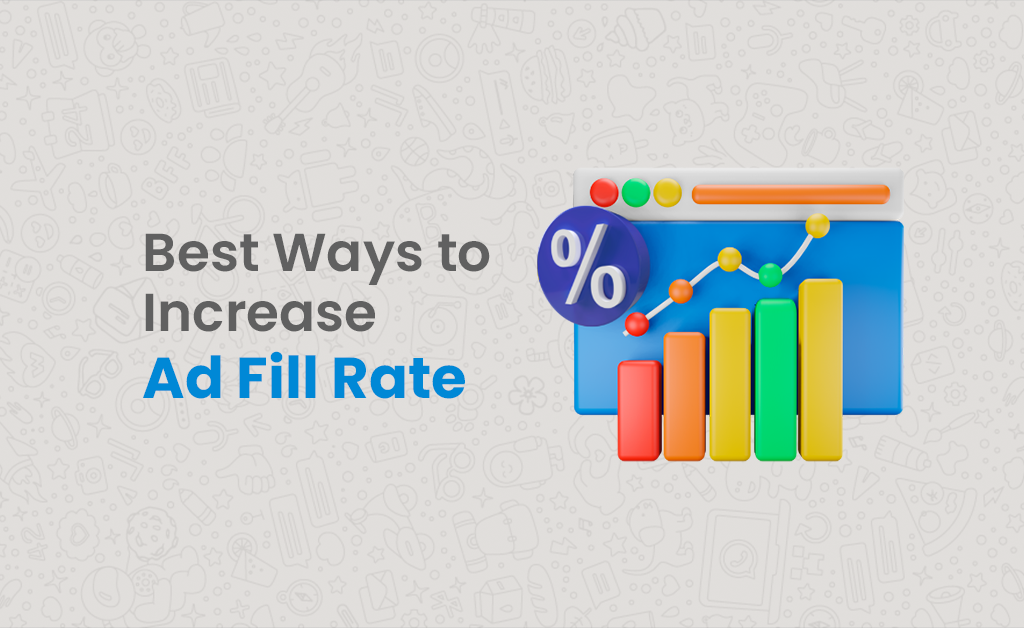The Ultimate Guide to Fill Rate: Maximizing Revenue with Ad Optimization.

Introduction
In today’s digital landscape, online advertising plays a crucial role in the success of businesses. One key metric that advertisers and publishers focus on is the fill rate. Fill rate represents the percentage of ad requests that are successfully filled with ads. In this comprehensive guide, we will explore the concept of fill rate, its importance in maximizing revenue, and strategies to optimize it effectively. Whether you are an advertiser or a publisher, understanding and improving fill rate can significantly impact your online advertising efforts.
Table of Contents
- What is Fill Rate?
- The Impact of Fill Rate on Revenue
- Factors Affecting Fill Rate
- Strategies to Improve Fill Rate
- Optimize Ad Placement
- Implement Header Bidding
- Use Multiple Ad Networks
- Improve Page Load Speed
- Enhance Ad Quality
- Employ Frequency Capping
- Leverage Ad Refresh
- Target Niche Audiences
- Utilize A/B Testing
- Monitor and Analyze Performance
- Frequently Asked Questions (FAQs)
- How is fill rate calculated?
- What is the ideal fill rate?
- How can I determine if my fill rate is low?
- Is fill rate the same as impression rate?
- Can fill rate be improved instantly?
- Should I prioritize fill rate over ad quality?
- Conclusion
What is Fill Rate?
Fill rate is a metric used in the advertising industry to measure the effectiveness of ad inventory utilization. It represents the percentage of ad requests that are successfully filled with ads. When an ad request is made by a publisher’s website, it is sent to an ad network or exchange, where advertisers compete for the opportunity to display their ads. The fill rate indicates how well the ad network or exchange is able to match available ads with the incoming ad requests.
The Impact of Fill Rate on Revenue
Fill rate directly impacts the revenue generated from online advertising. A low fill rate means that a significant portion of ad requests are going unfilled, resulting in missed opportunities to earn revenue. On the other hand, a high fill rate ensures that more ad requests are successfully filled, maximizing the revenue potential. Increasing fill rate is essential for publishers as it directly correlates with their ability to monetize their website traffic effectively.
Factors Affecting Fill Rate
Several factors influence the fill rate of ad inventory. Understanding these factors can help publishers and advertisers identify areas for improvement. Here are some key factors affecting fill rate:
- Ad Network Performance: The performance of the ad network or exchange used plays a crucial role in fill rate. Some networks have a broader reach and access to a larger pool of advertisers, resulting in higher fill rates.
- Ad Placement: The placement of ads on a webpage can impact the fill rate. Ads placed above the fold or in prominent positions tend to have higher visibility and attract more advertisers, leading to better fill rates.
- Website Traffic Quality: The quality of website traffic influences fill rate. Advertisers prefer websites with high-quality traffic and engaged users, as it increases the chances of their ads being seen and clicked.
- Targeting and Relevance: Advertisers often target specific demographics or interests. Publishers who can provide highly targeted ad placements that match advertisers’ criteria tend to have higher fill rates.
- Page Load Speed: Slow-loading webpages can negatively impact fill rate. Advertisers prefer websites with fast page load times to ensure their ads are displayed promptly.
Strategies to Improve Fill Rate
Now that we understand the importance of fill rate, let’s explore some effective strategies to improve it:
1. Optimize Ad Placement
Carefully consider the placement of ads on your website. Experiment with different positions and monitor the fill rate for each placement. Ads placed above the fold or near engaging content tend to yield higher fill rates.
2. Implement Header Bidding
Header bidding is an advanced programmatic advertising technique that allows publishers to offer their ad inventory to multiple ad exchanges simultaneously. By implementing header bidding, publishers can increase competition for their inventory, resulting in higher fill rates.
3. Use Multiple Ad Networks
Working with multiple ad networks diversifies the demand sources for your ad inventory. Each network brings its own set of advertisers, increasing the chances of higher fill rates. Utilize ad mediation platforms to efficiently manage multiple networks.
4. Improve Page Load Speed
Optimize your website’s page load speed to create a seamless user experience. Faster-loading pages lead to better engagement, increased ad viewability, and ultimately, higher fill rates. Compress images, minify code, and leverage browser caching to reduce load times.
5. Enhance Ad Quality
Ensure that the ads displayed on your website are of high quality and relevance. Advertisers value the placement of their ads alongside premium content and engaging visuals. High-quality ads attract more advertisers, resulting in improved fill rates.
6. Employ Frequency Capping
Implement frequency capping to control the number of times an individual user sees the same ad. By managing ad frequency, you can prevent ad fatigue and increase the chances of filling more ad slots with different ads, thus improving fill rate.
7. Leverage Ad Refresh
Consider implementing ad refresh strategies to dynamically update ads on your webpages. This technique can help increase fill rate by presenting fresh ads to users during their browsing sessions.
8. Target Niche Audiences
Identify and target niche audiences relevant to your website’s content. By catering to specific demographics or interests, you can attract advertisers looking for highly targeted placements, resulting in improved fill rates.
9. Utilize A/B Testing
Conduct A/B testing to compare the performance of different ad formats, placements, and targeting strategies. By analyzing the results, you can identify the most effective combinations to maximize fill rate and revenue.
10. Monitor and Analyze Performance
Regularly monitor and analyze the performance of your ad campaigns and ad networks. Utilize analytics tools to gain insights into fill rates, click-through rates, and revenue Maximizing Revenue. Identify trends and make data-driven optimizations to continuously improve fill rate.
.jpg)
Frequently Asked Questions (FAQs)
1. How is fill rate calculated?
Fill rate is calculated by dividing the total number of filled ad requests by the total number of ad requests made and multiplying the result by 100. The formula is as follows:
Fill Rate = (Filled Ad Requests / Total Ad Requests) * 100
2. What is the ideal fill rate?
The ideal fill rate varies depending on factors such as website niche, traffic quality, and ad network performance. Generally, a fill rate above 80% is considered good, but it’s essential to strive for continuous improvement.
3. How can I determine if my fill rate is low?
Comparing your fill rate to industry benchmarks can give you an idea of whether is low. Additionally, monitoring revenue generated per ad request can provide insights into the effectiveness of your ad optimization efforts.
4. Is fill rate the same as impression rate?
No, fill rate and impression rate are different metrics. Fill rate measures the percentage of ad requests filled with ads, while impression rate represents the percentage of ad impressions delivered successfully out of the total ad requests.
5. Can fill rate be improved instantly?
Improving fill rate is a continuous process that requires careful optimization and monitoring. While some changes can yield quick improvements, such as optimizing ad placements, long-term strategies like audience targeting and ad quality enhancements contribute to sustained fill rate improvement.
6. Should I prioritize fill rate over ad quality?
Both fill rate and ad quality are important considerations. While improving fill rate is crucial for revenue optimization, it should not come at the expense of user experience. Strive for a balance between maximizing fill rate and delivering high-quality ads to your audience.
Conclusion
Fill rate is a vital metric that directly impacts the revenue potential of online advertising efforts. By understanding the factors influencing fill rate and implementing effective optimization strategies, publishers and advertisers can maximize their revenue and achieve better results from their ad campaigns. Continuously monitor and analyze performance, experiment with different tactics, and stay updated with industry trends to stay ahead in the ever-evolving world of online advertising.


:max_bytes(150000):strip_icc()/IFRS_Final_4194858-00f3f3a4c8334cc1aa13b29e692935db.jpg)



